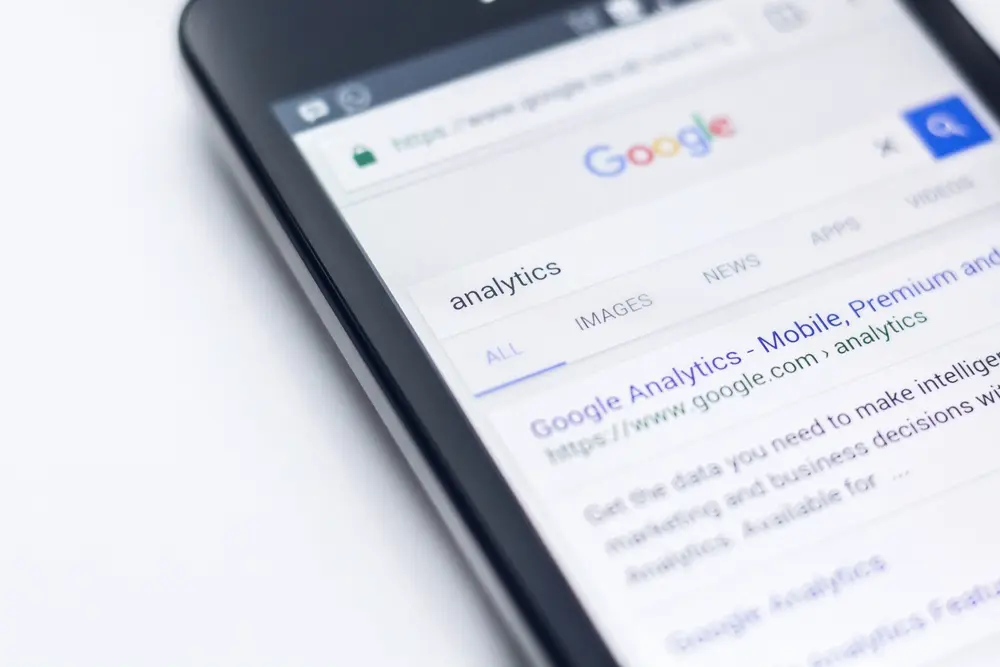Lead generation and obtaining new customers are two of the most important things your business needs to do. KickoffLabs makes the process of lead generation easy, but you still need to drive targeted traffic to your landing pages. There are several channels you can use to drive traffic such as organic search, social media, and paid advertising. This course is going to focus on the latter and teach you the fundamentals of running your first advertising campaign.
You may be curious why we chose to focus on advertising instead of organic search engine optimization or social media marketing. There are many benefits of advertising but some of the most important ones are testability, in-depth reporting, and time to launch. This combination of attributes makes it one of the best ways to test ideas and reach your target audience. While other channels may be cheaper in the long run, it’s rare to find another channel that you can see results with today and start gauging performance.
This post is going to focus on the fundamentals of running an advertising campaign and what you need to know to be successful. Future posts will be more isolated and focus on specific platforms such as Google AdWords and Facebook Advertising. We cover some of those topics, but this is an introduction to the higher level concepts.

The Goals of Advertising
The goal for advertising is to acquire customers at a price point lower than their expected lifetime value. For example, let’s say you are selling a product which you charge $500 for. If you are able to drive traffic to your landing page and acquire new customers for less than $500 then you’ll be running a profitable campaign. This means that for every dollar you are spending on advertising, you are generating over a dollar in profit. By scaling a profitable campaign up, advertising can become your engine of growth.
If you are building an app or selling a product that isn’t ready yet, you can use advertising to build a list of interested prospects, get product feedback, and get insight into your potential customers. It can be a cost-effective way to test your ideas, find beta users, and start conversations with interested people.
At the end of the day, your goal is most likely to get in front of your target audience for the lowest price or test your marketing messages.
How Advertising Pricing Works
There are many forms of online advertising and the mechanics of how they operate can vary. Two of the most common forms are Cost-Per-Click (CPC) and Cost-Per-Mille (CPM). These have different types of billing and different strategies. Before we dive into CPC and CPM, let’s define a few terms:
CPC and CPM sound complicated but when you break them down, they are pretty simple. Both of these describe how you spend money to display your advertisement to users.
The actual price you pay depends on the niche you are advertising in and whom you are advertising to, but typically CPC is normally a bit more expensive. This is because when you setup CPC advertising, you are only paying when someone actually clicks-through to your landing page. The click guarantees you’ll get traffic to your landing page instead of only getting impressions on your advertisement.
Think about it this way, when someone clicks-through to your landing page, you have an opportunity to generate a lead, make a sale, or get a conversion. Impressions are not as valuable because those people may or may-not even make it to your landing page. Click-Through Rate (CTR) is the percentage of people who click-through to your website vs. view your advertisement .
CTR = click-throughs / impressions

Getting Started With Analytics
One of the first things you want to do before spending any money on advertising is making sure you have a way to track your analytics. To gauge how effective your advertising is, we’ll need to know a handful of metrics such as:
There are tons of platforms you can use to get this data, but one of the most popular (and conveniently free) is Google Analytics. The signup process is pretty straightforward so we aren’t going to go step by step. The signup and setup process can be summarized as:
For instructions, check out: https://support.google.com/analytics/answer/1008080?hl=en
The Importance of Testing
Since the goal of advertising is usually to pay the lowest amount, testing your advertisements, and making adjustments is very important. If you take one thing away it should be that testing is critical to long term success. A lot of companies select their audience, write their ads, and publish them…only to return weeks or months later to see them performing poorly. You don’t want to be a part of that group.
“Testing” is a simple word but beginners are often confused what that means in practice. There are hundreds of things you may want to test, but some popular ones are how much it costs to acquire a new customer, how many impressions your advertisement gets per day, and what the click-through rate of your advertisement is. The best part about doing actual testing is that it occurs in the real world–real advertisements, real users, real costs, and presumably real sales. There are tools that exist to estimate these metrics, but you won’t know for sure until your campaign is live.
You can test your a variety a ways and most platforms are flexible. A simple way to test your campaign is by running your advertisements with a limited budget for a predetermined period. By running it on a limited budget, you won’t break the bank but you can check back to see if your campaign is as effective as you want it to be.
How to Gauge Effectiveness
You can use a variety of metrics to compare effectiveness over time, but usually it comes down to Return on Investment (ROI). ROI from an advertising perspective is to how much profit you generate compared to your expenses for that given period. To calculate your ROI, you need to know a few things:
For example, let’s say you run an online watch business and you sell your watches for $500. The watch costs you $250 to manufacture, inventory, and ship to your customer. For this month, you spent $1,000 on advertisements and generated 20 sales or $10,000 in revenue. Your ROI would be 66%.
ROI = (Revenue – (Cost of Goods + Advertising Spend) / (Cost of Goods + Advertising Spend)
ROI = ($10,000 – ($5,000 + $1,000)) / ($5,000 + $1,000) = 66%
When your ROI is positive, it means you are profitable or that your revenues exceed your expenses. While testing, you can shrink the period to get an accurate ROI without spending as much money.

Testing With Metrics
The previous example was an ROI calculation for an entire month but you can also calculate ROI for a fiscal year, quarter, or any period for that matter. When you begin testing, you can use this ROI calculation to see if your campaign is profitable and without spending large sums of money. I like testing for an entire week because it provides a more accurate picture of how your campaign will perform when you scale it up.
Remember, the goal is to see how effective your advertisement is without spending a ton of money. If you’ve done some back-of-the-napkin math and decided that you have $1,000 per month to spend on advertising, then the week long test could cost $250 or ¼ of your monthly budget. Here are three different scenarios for your week-long test:
Example A: Profitable
ROI = ($3,000 – ($1,500 + $250) / ($1,500 + $250) = 71%
In this example, your test proved that your campaign can be profitable. This means that for every dollar you spend on advertising, you’ll earn at least a dollar in revenue. While profitable, you can launch your campaign and increase your budget over time.
Example B: Breakeven
ROI = ($500 – ($250 + $250) / ($250 + $250) = 0%
In this example, you are breaking even. Your expenses (cost of manufacturing, shipping, and advertising) and revenue are equal. When your test is breaking-even, you may want to optimize your advertisement or landing page so you can increase your revenue. During this period, you sold one watch…but if you would have sold two (and spent the same on advertising), then you would see an ROI of 33% (($1,000 – ($500 + $250) / ($500 + $250)).
Example C: Unprofitable
ROI = (0 – (0 + $250) / $250 = -66%
In this example, during your testing week you did not sell any watches but spent $250 on advertising. This isn’t a desirable outcome, but the important thing is that you found out your advertisement was ineffective by only spending $250 vs. $1,000 or more. When you find yourself in this position, you may want to re-write your ad copy, change your keywords, and/or improve your landing page.
Optimizing Your Campaign
So you’ve run your test and learned that your advertisement, landing page, or some combination is ineffective and unprofitable. Or maybe your campaign is profitable but not as profitable as you want it to be. Either way, it’s time to make some changes!
Landing Page Optimizations
Your landing page plays a critical role in the success of your campaign. Even if your campaign is generating a fair amount of traffic, your landing page could be performing poorly and wasting your ad spend. You may want to consider trying to improve your conversion rate, re-designing your landing page, or updating the copy of your landing page to make it more effective. Google Analytics can help you understand the performance of your landing page.
Advertisement Optimizations
If your landing page performs well when people get to it, but not enough people are clicking on your advertisement, then you may want to update your ad copy to improve its click-through rate. This type of optimization is quite common when using Facebook Advertising or other CPM platforms (remember, you are paying for 1,000 impressions, not specifically those who click-through to your landing page).
Platform Specific Optimizations
Each advertising platform has different options and settings when configuring your campaign. If you are advertising on Facebook, you may spend a lot of time setting up your custom audience. If you are advertising on Google AdWords, you may spend a lot of time setting up keywords and ads. If your campaign isn’t as effective as you want it to be, you can try improving the targeting of your Facebook audience or use more specific keyword match types on Google AdWords. We will explore both of these platforms in-depth in future posts.
Recap
Test, learn, and make optimizations. You are spending money to get in front of your audience but whether it’s profitable or not is up to you. By running short tests with a limited budget you can learn how effective your campaign is. Advertising is a numbers game, so make sure to know your numbers!